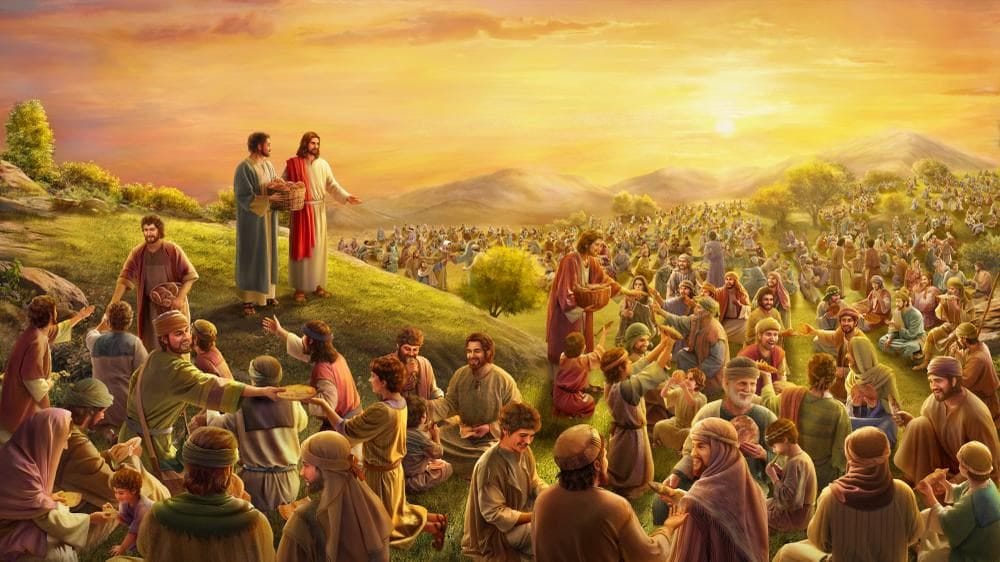We are now in the forty day period between the Resurrection and Ascension of Our Lord. During these forty days we are told,
He presented himself alive to them after his suffering by many proofs, appearing to them during forty days and speaking about the kingdom of God. (Acts 1:3 ESV-CE)
We know of about 12 of these appearances. But one is especially interesting to me. St. Paul wrote to the Corinthians around the year AD 55 with a list of men who first saw the risen Christ. This would have been about 25 years after the death and resurrection of Jesus.
He did not include women since in that day and age they were not considered reliable witnesses, and St. Paul is making a “legal defense” of the physical and bodily resurrection. In this list written 25 years later he writes,
He appeared to Cephas, then to the twelve. Then he appeared to more than five hundred brothers at one time, most of whom are still alive, though some have fallen asleep. Then he appeared to James, then to all the apostles. (1 Corinthians 15:5-7)
Notice the middle sentence. He appeared to five hundred brothers. There are speculations as to where and when this happened, but we are not told. It could likely be when he appeared in Galilee, possibly with many of the locals who had eaten the loaves and fish.
Here is what piqued my interest this morning. When Jesus fed the multitudes we are not told the whole number of people he fed. In Matthew 14:21 it reads,
And those who ate [the loaves and fish] were about five thousand men, besides women and children.

-
Save
Now if the same general rule and holds true for the 500 men who saw the risen Lord — that women and children were not included in the number — then with the women and children we could expect the number was closer to 2,000 who witnessed the risen Lord at that “one time”.
The Greek word behind “brothers” is adelphos which can mean only men, or brethren in general, as in all the followers of Christ. Remember, Paul does not list the women who first saw Jesus at the tomb on that resurrection morning (Mark 16:1). In his 1 Corinthians 15 list there are only men mentioned. It is possible that adelphos could be men and woman, but it is also possible, and maybe even likely, that “brothers” refers only to men.
If this is the case, then it is possible that 500 “brothers” saw the risen Christ along with about fifteen hundred women and children. Thus the number of eye-witnesses would swell to even more impressive numbers.
Then notice what St. Paul says about the five hundred brothers,
Then he appeared to more than five hundred brothers at one time, most of whom are still alive, though some have fallen asleep. (1 Cor 15:6)

-
Save
Now let’s take it one step further. If some of these witnesses were children at the time of this appearance to “five hundred brothers at one time”, then some of this list of witnesses would still have been available into the 2nd century.
For example, if a young boy of ten years old was a witness to Christ with that large group, by the year AD 100 he would be eighty years old. So even by the end of the 1st century and into the 2nd century some of these witnesses would still be telling what they saw.
And the testimony of living witnesses passed on through the early Church. One of my favorites is St. Irenaeus writing at the end of the 2nd century (AD 180) recalling his listening to St. Polycarp, who told of his time with St. John who walked with Jesus for three years.
“But Polycarp also was not only instructed by apostles, and conversed with many who had seen Christ, but was also, by apostles in Asia, appointed bishop of the Church in Smyrna, whom I also saw in my early youth, for he tarried [on earth] a very long time, … having always taught the things which he had learned from the apostles, and which the Church has handed down, and which alone are true.
For I [Irenaeus] have a more vivid recollection of what occurred at that time than of recent events … so that I can even describe the place where the blessed Polycarp used to sit and discourse … how he would speak of his familiar association with John, and with the rest of those who had seen the Lord; and how he would call their words to remembrance. (Irenaeus of Lyons, Fragments from the Lost Writings of Irenæus)
So Polycarp knew not only the apostles, but also many others “who had seen the Lord” referring most likely to the eyewitnesses we have mentioned above. And he passed this testimony on to Irenaeus who wrote about it in AD 180.
So, we know that Jesus is risen! The testimony of the living witnesses lives on in their writings and in the Church. He has risen indeed!

-
Save


